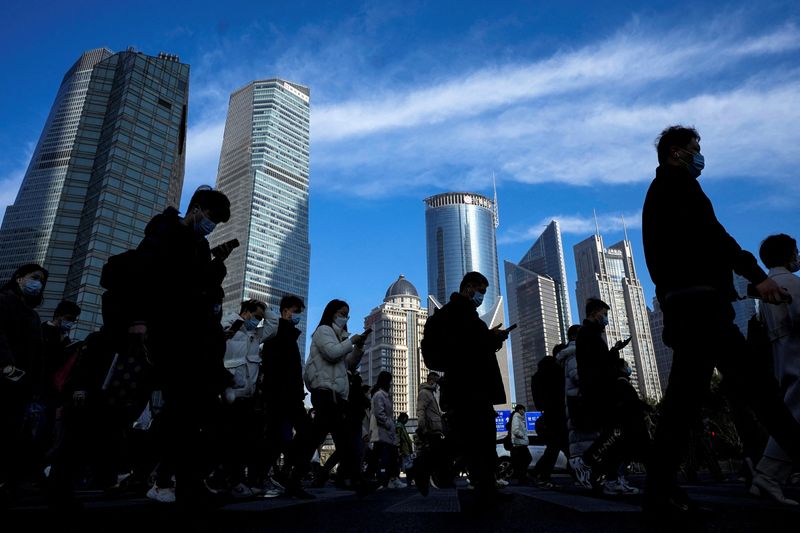This post was originally published on this site
https://i-invdn-com.investing.com/trkd-images/LYNXNPEK2U07F_L.jpg(Reuters) – A look at the day ahead in Asian markets.
Asian markets are primed for a positive start to the new quarter following more evidence of the U.S. “soft landing” on Friday and figures on Sunday that showed manufacturing and service sector activity in China last month accelerated in tandem.
Trading volume on Monday will be lighter than usual with much of Europe still closed for the Easter holiday, but U.S. stock and bond markets are open again.
Asia’s economic calendar is packed with key indicators — manufacturing purchasing managers index reports from several countries including Japan; South Korean trade; Indonesian inflation; and Japan’s quarterly tankan business conditions surveys.
The exchange rates of Asia’s two largest economies will once again be under the spotlight – Japan’s yen remains in “intervention” territory, and while China’s yuan is also under pressure against the dollar but is at a 30-year high against the yen.
The yuan last week slipped in spot trading to its weakest level this year around 7.22 per dollar but the People’s Bank of China has kept the daily fixing rate virtually unchanged around 7.0950 for the past four days.
This suggests the PBOC doesn’t want any volatility or abrupt weakness. But Beijing’s predicament is exacerbated by the yuan’s exchange rate with the yen — it is at 30-year high against the Japanese currency, giving Tokyo a competitive advantage on the world trade stage.
But Beijing will have welcomed the latest earnings from tech giant Huawei, and official PMI figures that showed manufacturing activity expanding for the first time in six months.
The manufacturing PMI rose to 50.8 from 49.1 a month earlier and export orders also picked up. The official services PMI rose to its highest since June and the composite PMI its highest since April — numbers that could give Chinese and global markets a lift on Monday.
China’s unofficial Caixin manufacturing PMI figures will be released on Monday.
Investors will also be looking to see whether Japan’s first quarter tankan business conditions surveys shows evidence of economic momentum and recovery in domestic demand. Capex plans of large firms could also signal whether Japan’s stock market boom has more upside.
Another market-mover on Monday could be Indonesian consumer inflation. Rising meat and food prices are expected to lift the annual rate to 2.91% in March from 2.75%, which would be the highest since August although still within Bank Indonesia’s 1.5%-3.5% target.
The central bank left its policy rate unchanged at 6% for the fourth consecutive meeting in February and is likely to wait for the Fed to cut rates before easing.
Regional highlights later include more PMIs, inflation from South Korea and the Philippines, and the latest monetary policy decision and guidance from the Reserve Bank of India.
Here are key developments that could provide more direction to markets on Monday:
– China Caixin manufacturing PMI (March)

– Japan tankan survey (Q1)
– Indonesia inflation (March)
(By Jamie McGeever; Editing by Lisa Shumaker)

